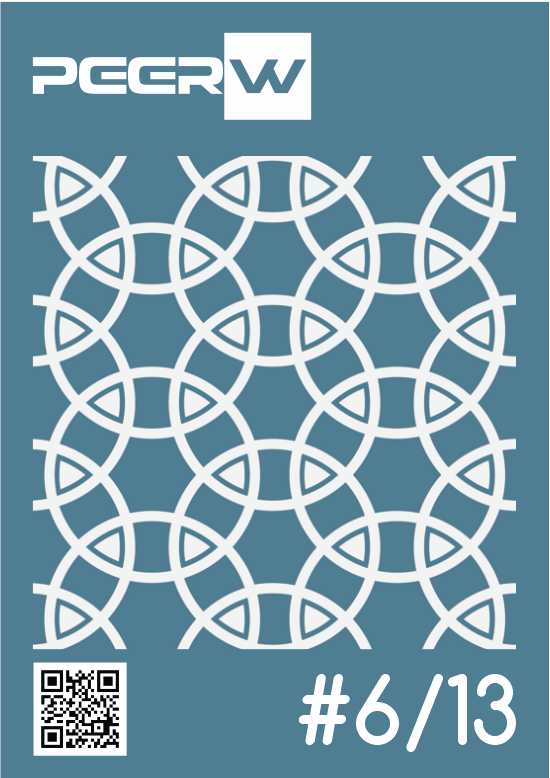Oscilometria de impulso no comportamento do broncoespasmo induzido pela hiperventilação eucápnica voluntária em pediatria
DOI:
https://doi.org/10.53660/PRW-2345-4320Palavras-chave:
Espasmo brônquico, Asma induzida por exercício, Oscilometria, EspirometriaResumo
Avaliar a utilização da oscilometria de impulso no comportamento do broncoespasmo induzido pela hiperventilação eucápnica voluntária em crianças e adolescentes asmáticos. Setenta participantes, 62% (43) eram do sexo masculino. Para todo o grupo a idade média foi de 11,22± 3,23 anos, peso médio de 44,21± 16,15 kg e altura média de 150,28± 17,07 cm. Sessenta por cento (42) dos pacientes apresentaram broncoespasmo após a realização de estímulo broncoprovocativo. As principais variações foram identificadas em R5Hz (p = 0,015), R5-R20Hz (p = 0,012), X5Hz (p = 0,045) e AX (p = 0,044). No que se refere a comparação dos tempos pós HEV em relação à média dos tempos pré, na oscilometria de impulso, os parâmetros de R5Hz, R5-R20hz e X5Hz apresentaram maior diferença entre o quinto e o trigésimo minuto, com significância de 0,004, 0,013 e 0,049 respectivamente. Na espirometria, os principais parâmetros alterados foram o VEF1 (p < 0,01) e CVF (p = 0,01). O coeficiente de correlação intraclasse foi de 0,949. Os participantes apresentaram maior frequência do broncoespasmo entre o 5º e 15º minuto após a HEV.
Downloads
Referências
ABU-HASAN M, TANNOUS B, WEINBERGER M. Exercise-induceddyspnea in childrenand adolescentes: ifnotasthmathenwhat? Ann Allergy Asthma Immunol. v.94, p.366-371, 2005.
ADDO-YOBO, E. O. D. et al. Seasonal variability in exercise test responses in Ghana. Pediatr Allergy Immunol, v. 13, n. 2, p. 303–306, 2002.
AL-MOAMARY, M. S. et al. The Saudi initiative for asthma - 2012 update: Guidelines for the diagnosis and management of asthma in adults and children. Ann Thorac Med, v. 7, n. 4, p.175–204, 2012.
ALBUQUERQUE CG et al. Resistência e reatância do sistema respiratório por oscilometria de impulso em indivíduos obesos. J Bras Pneumol. v.41, n.5, p.422-426, 2015.
AMORIM, A. J.; DANELUZZI, J. C. Prevalência de asma em escolares. J Pediat, v. 77, n. 3,p. 197–202, 2001.
ANDERSON, S. D. et al. Reproducibility of the airway response to an exercise protocol standardized for intensity, duration, and inspired air conditions, in subjects with symptoms suggestive of asthma. Respir Res, v. 11, p. 120, 2010.
ANDERSON SD, ARGYROS GJ,MAGNUSSEN H, HOLZER K. Provocation by eucapnic voluntary hyperpnoea to identify exercise induced bronchoconstriction. Br J Sports Med. n.35, p. 344-347, 2001.
ASSIS FMN et al. Broncoespasmo induzido por exercício, atividade física e suas limitações em crianças e adolescentes. Rev. Bras. de Alerg e Imunopatol. v.34, n.2, p.2-12, 2011.
ASSUMPÇÃO MS, GONÇALVES RM, FERREIRA LG, SCHIVINSKI CMI. Sistemas de oscilometria de impulso em pediatria: uma revisão de literatura. Rev. Med. Ribeirao Preto. v.47, n.2, p.131-142, 2014.
ASSUMPÇÃO et al. Impulse oscillometry and obesity in children. J Pediatric. 2017.
BARRETO, B. A P.; SOLE, D. Prevalence of asthma and associated factors in adolescentes living in Belem (Amazon region), Para, Brazil. Allergol Immunopathol (Madr), v. 42, n. 5,p. 427–432, 2013.
BOUSQUET, J. et al. Allergic Rhinitis and its Impact on Asthma (ARIA) 2008 update (in collaboration with the World Health Organization, GA(2)LEN and AllerGen). Allergy, v. 63,n. Suppl 86, p. 8–160, 2008.
BAR-YISHAY E; MATYASHCHUK E; MUSSAF H; MEI-ZAHAV M; PRAIS D; HANANYA S. Use of the forced oscillation technique to detect bronchodilation in children: experience from the Schneider Children’s Medical Center os Israel. Isr. Med. Assoc. J. n.4, v.11, p. 198-200, 2009.
BATMAZ et al. Impulse oscillometry in acute and stable asthmatic children: a comparison with spirometry. Journal of Asthma, 2015.
CAILLAUD, D. et al. Exercise-induced bronchospasm related to different phenotypes of rhinitis without asthma in primary schoolchildren: the French Six Cities Study. Clin Exp Allergy, v. 44, n. 6, p. 858–866, 2014.
CORREIA JUNIOR, M. A. DE V. et al. Effect of exercise-induced bronchospasm and parental beliefs on physical activity of asthmatic adolescents from a tropical region. Ann Allergy Asthma Immunol, v. 108, n. 4, p. 249–53, 2012.
DELGADO RN; CAMPOS TF; BORJA RO; FREITAS DA; CHAVES G. MENDONÇA, KM. Maximal Respiratory Pressures of Healthy Children. Pediatr Phys Ther. n.27, v.1, p. 31–37, 2015.
D’AMATO, G. et al. Meteorological conditions, climate change, new emerging factors, and asthma and related allergic disorders. A statement of the World Allergy Organization. World Allergy Organ J, v. 8, n. 1, p. 25, 2015.
DIRETRIZES PARA TESTES DE FUNÇÃO PULMONAR, 2002. No Title. J Pneumol, v.28, n. Supl 3, 2002.
DRAZEN, J. M.; BOULET, L.-P.; O’BYRNE, P. M. Asthma and Exercise-Induced Bronchoconstriction in Athletes. N Engl J Med, v. 372, n. 7, p. 641–648, 2015.
ELIASSON AH et al. Sensitivity and specifity of bronchial provocation testing: An evaluation of four techniques in exercise induced bronchospasm. Chest. n.102, p. 347-355, 1992.
EVANS TM, RUNDELL KW, BECK KC, LEVINE AM, BAUMANN JM. Airway narrowing measured by spirometry and impulse oscillometry following room temperature and cold temperatura exercise. Chest. v.128, p.2412-2419, 2005.
FONSECA AC, FONSECA MT, RODRIGUES ME, LASMAR LM, CAMARGOS PA. Peak expiratory flow monitoring in asthmatic children. J Pediatr. v.82, n.6, p.465-469, 2006.
FREY U. Forced oscillation technique in infants and young children. Rev. Ped. Resp. v.6, p.246-254, 2005.
GINA. Global Initiative For Asthma. Global Strategy for Asthma Management and Prevention, 2021.




